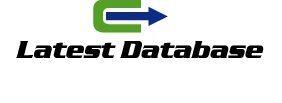Since then, the relationship between users and the industry is changing at a rapid pace. The pandemic helped in that, but digital acceleration is also playing its due part in pushing a new model for healthcare. This begs the question: how can we get the users and clients on board?
Pushing for change
The adoption of AI and robotics in the country wise email marketing list healthcare industry it’s not a matter of if but a matter of when. Remote surgeries, automated diagnosis, VR training—it’s all part of the industrial revolution 4.0. But while sci-fi fans might be rooting for a cybernetic reality, plenty of people are worried about the implications.
Let’s be honest, we live in a world where people unironically decided to burn mobile towers to prevent the propagation of the coronavirus. Many are apprehensive in regards to AIs, algorithms, and robotics. Where some see growth and progress others see the dystopian world of the Terminator.
So how can we ease the transition? In this case, I would like to point to “Codename Optimus,” the robot announced by Tesla’s Elon Musk in early 2021. The announcement started with a dancer dressed like a prototype robot, dancing to electronic music.
Behavioral Models
To put it in simple terms, a behavioral model is an approximation of how living beings behave, and why they behave in specific ways. I always like to explain the basics with B.F Skinner’s model. It’s the foundation for almost every other behavioral model out there.
Skinner saw human action as the what it is and how to apply it in 7 steps consequence of previous actions. More specifically, he believed that contingencies formed between the environment and how we react are learned by reinforcing that relation through either reinforcement or punishment.
Let’s look at a few examples:
- Whenever you smell fresh baked cookies and go check the kitchen. Your partner has prepared a fresh batch and gives you a cookie. That’s positive reinforcement. The next time you smell cookies odds are you’ll go to the kitchen to get a reward (the cookie).
- You start driving and an alarm goes off, a terrible beeping sound that won’t stop until you fasten the seatbelt. That’s negative reinforcement. In this case, something undesirable is removed and you learn that you should fasten the belt to avoid it in the future.
- You take a sip of freshly brewed coffee, but the cup is too hot and you burn your mouth. That’s a punishment. You learn that drinking from a hot cup causes pain, so you avoid it in the future.
Remember, the process is always like this: stimuli -> response -> reinforcement. Of course, that’s one of the simplest models out there. Other researchers and behavior engineers have developed models that introduce cognitive processes as mediators between stimuli and response. But that’s another subject.
Behavioral Design
With behavioral design, we can create mobile list technology based on the principles of a behavioral model. In other words, we use psychology to create a system that considers how the user will behave in certain situations.
One quick example is how the mobile gaming industry uses surprised-based mechanics to entice players to spend money. “Loot-boxes” explode in a rain of colors and lights, a spectacle that triggers every dopamine receptor in the brain.





